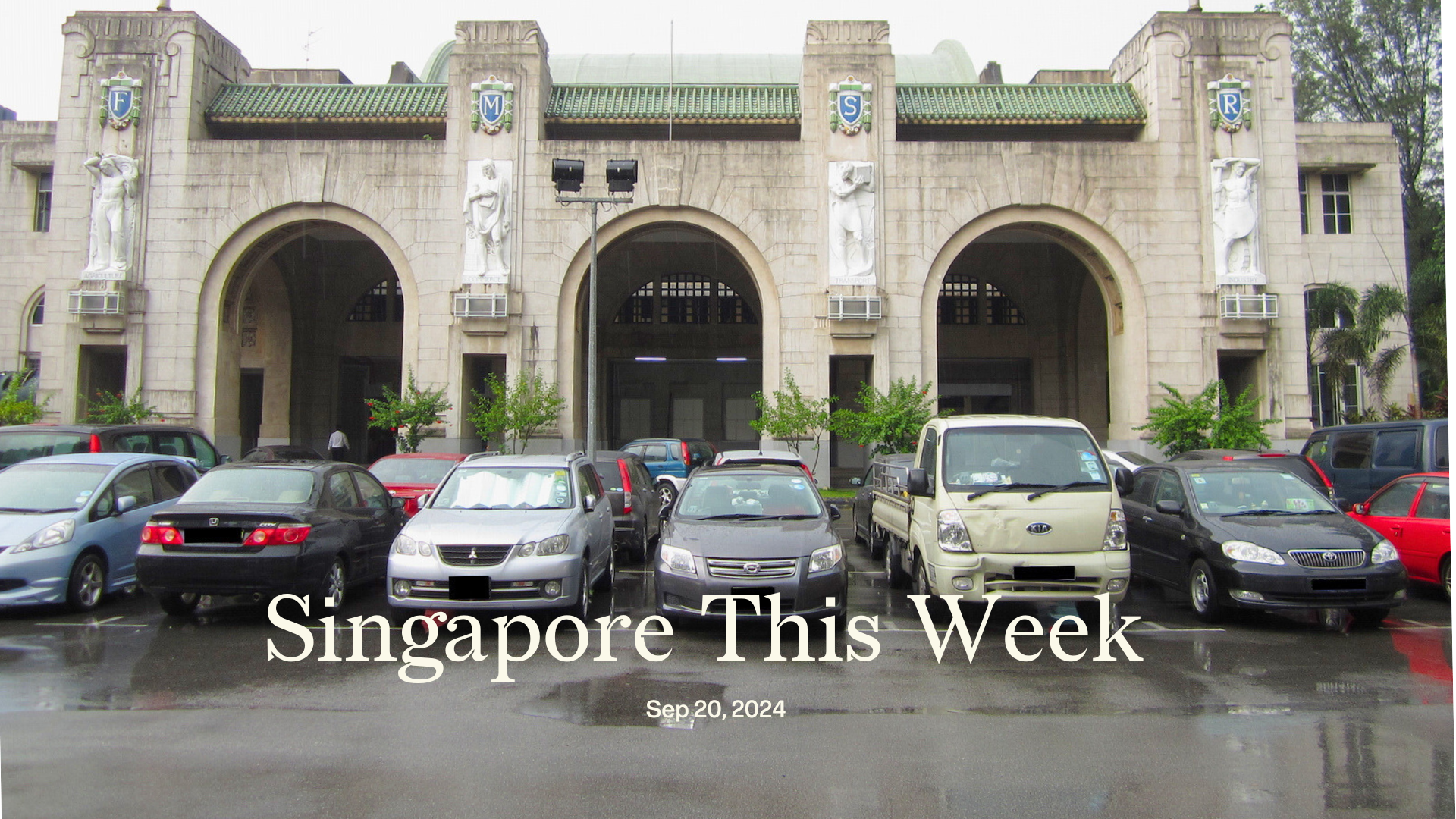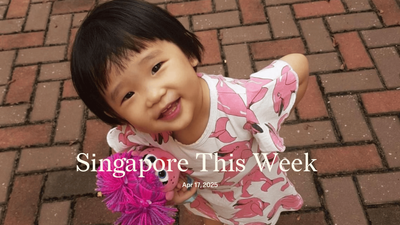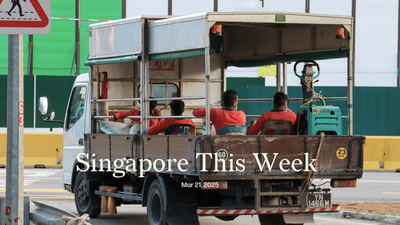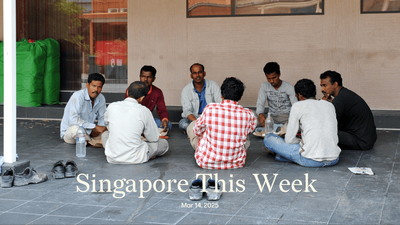Politics: Vote wisely
Should a democracy’s public service care about how citizens vote? In theory, public servants should discharge their duties with the same care and fortitude regardless of who forms the government. Yet in Singapore, the line between politics and public service has often seemed blurry. Fans of the Singapore model would probably argue that its economic success is partly due to this incestuous relationship between the public service and the ruling People’s Action Party (PAP). Lawrence Wong, new prime minister, is one of many politicians headhunted from the supposedly apolitical public service. Ahead of the next general election, which must be held by November 2025, rumours are already swirling about which senior civil servants might next enjoy a political baptism.
This week, Lee Hsien Loong, senior minister, warned attendees at the annual Public Service Leadership Ceremony about the dangers of a larger opposition presence. “If electoral margins get slimmer, the government will have less political space to do the right things. It will become harder to disregard short-term considerations in decision-making. The political dynamics will become very different. Singaporeans must understand the dangers this creates, and so must the public service.” It is an old PAP canard: regular electoral politics leads to short-termism, but our brand of illiberal democracy—with a one-party-dominated, rubber-stamp Parliament—allows for long-term planning. The problem with this school of thought is that more and more Singaporeans, concerned about gross social inequalities and questionable land use policies, are instead starting to ask: if this long-term direction is wrong, what must we do?
Some further reading: In “The PAP’s unchanging playbook”, we examine why the politics of fear may be increasingly self-defeating.
Politics: Huat ah!
Last week, The Online Citizen reported that K Shanmugam, law and home affairs minister, had effectively sold his bungalow at 6 Astrid Hill for S$88m last August. He apparently transferred ownership of it to UBS Trustees (Singapore) Ltd for that amount, with the ultimate beneficiary listed as The Jasmine Villa Settlement. Given that he seemingly bought it in late 2003 for under S$8m, it represents an over 11x multiple. Documents purportedly from the Singapore Land Authority (SLA), published anonymously on Reddit, appear to support all this. (Shanmugam and SLA did not respond to separate requests for comment about the documents’ veracity.) Not much is known about The Jasmine Villa Settlement, including whether or not it is controlled by Singapore citizens—important given how careful Singapore is about foreign ownership of landed plots. Over the past week, this news has enlivened political observers. The Straits Times and other mainstream media outlets, usually so enthralled by bungalow dealings of the rich and famous, have been conspicuously silent.
It would be wrong to dismiss all this as mere gossip. For while Shanmugam’s actions are always unimpeachable, as all Singaporeans know, he may have a growing optics issue. Last year, revelations that he is renting a palatial colonial bungalow on Ridout Road caused some class angst—his overall property is about 250,000 sq ft, larger than three football fields, or equivalent to over 250 average public housing flats. Now comes the news, assuming the leaked SLA documents are accurate, that he sold one for an eye-watering sum—even as many Singaporeans are struggling to get by. The rise in valuation has also offered Singaporeans a clear data point about how the rich get richer. From 2003-23, while Shanmugam’s property multiplied in value by over 11x, the HDB resale index rose only under 3x. (To be sure, it’s not a perfect comparison.) It’s becoming too easy for the PAP’s critics to label it as the party of the rich. Though the number 8 is auspicious for Chinese, Shanmugam and fans may one day regret “88”.
Society: Lunar commercial madness
Another 中秋节 (zhong qiu jie, Mid-Autumn festival), another season of waxing lyrical about the environmental costs of excessive mooncake packaging waste. Containers have become more elaborate; the gushing on social media unboxing videos more effusive; and as if to assuage our collective guilt of needing to impress and be impressed, the marketing language more eco-sophisticated: “food-grade, biodegradable lacquered bamboo mooncake box with a rubber bellyband, which can be repurposed as a lunchbox.” But who are we kidding? Granted, there are people who conscientiously repurpose the packaging, but they hardly account for the hundreds of boxes and accoutrements that end up incinerated yearly. (Incidentally, Choa Chu Kang Town Council has discouraged its residents from recycling mooncake boxes, noting that most of the materials aren’t recyclable.)
It’s a lucrative business, is what it is—five-star hotels and restaurants can charge upwards of S$25 for each cake. Since it’s as much about branding as it is about the quality of the sugary, lard-laden goods, customers willingly hand over their money. The enterprising have tried to turn fancy, but essentially valueless, containers into collectible items—S$1,800 for an Audemars Piguet box?! “The hospitality and F&B industries are doing to [the] mid-autumn festival what shop retailers did with Christmas centuries ago,” said one Reddit user. Perhaps it’s worth recalling the communal origins of this festival before it got transformed by the relentless forces of conspicuous gifting and consumption. The Mid-Autumn Festival is so called because it falls on the 15th day of the eighth lunar month—middle of the month, and the middle of autumn. The tradition of worshipping the moon perhaps began during the Song dynasty (960-1279). “In Singapore, mooncakes and lanterns are offered for sale as early as a month before the festival,” wrote Bonny Tan, for the National Library Board. “These days, however, it has become more common to give mooncakes as gifts than to eat them during the festival.”
But we don’t have to indulge in these excesses. Businesses can sell mooncakes sans the eco-unfriendly bells and whistles, and/or corporates can think up more creative and infinitely greener ways to show their gratitude to clients. And what people can do, rather than getting sucked into this mindless consumer frenzy, is to revive the meaningful circadian celebrations of yore. Wrote Tan: “Moon-viewing parties is one way to enjoy the occasion, with family and friends sitting in gardens lit by paper lanterns, sipping tea, nibbling on mooncakes, and if so inspired, composing poetry in venerable Tang Dynasty fashion.”
Society: Towards a more inclusive Olympics
Singapore has bagged two gold, four silver and two bronze medals at the “Olympics of vocational skills”. Among other feats, our athletes triumphed at visual displays—modern-day sirens designed to lure unsuspecting pedestrians into department stores through seductive showcasing, and freight-forwarding, which, to the uninitiated, may sound like code for en masse e-mail spamming, but actually refers to “organising shipments of raw supplies or finished goods from the supplier or manufacturer to the point of distribution or final market place.” Well done to all.
However, Singapore was conspicuously absent from more earthy contests like plumbing, electrical installations, and refrigeration and air conditioning, trades that are fast disappearing down the toilet here. How much “digital construction”—another category for which we won accolades—can one realistically do when the aircon is on the fritz? The larger question: why restrict the competition to vocations? We’re in an age where calls to recognise the skill and labour involved in household chores and caregiving are, rightfully, becoming louder. A few ideas:
Fridge Tetris: Contestants fit boxes, plates, bottles, bags, and impossibly-shaped fruits and vegetables into a medium-sized refrigerator in the allotted time.
Shopping (Go) Kart: Athletes race through supermarket aisles picking up items from a given list. Bonus points for every uncle or aunty elbowed out of the way.
Wild Child: Parents list all the ways they’ve saved their children from self-sabotage on the given day. Examples of self-sabotage include poking fingers in electrical sockets, beating mirrors with tiny fists, waddling into oncoming traffic and disregarding tissue packets at hawker centre tables.
History Weekly by Faris Joraimi
The Urban Redevelopment Authority announced tentative plans for the restored Tanjong Pagar Railway Station recently, including a community lawn and movable platforms over the train tracks to make room for events. I like the idea by Hong Kong-based architects for a ring-shaped skywalk allowing closer access to the high murals depicting Malayan landscapes, agriculture, and shipping. Below ground, the Cantonment MRT station is under construction. When it opens in 2026, you can ascend by escalator into the grand vaulted hall of Tanjong Pagar’s old dame first built in 1932: a dialogue between two eras of our transport history. There have been successful revitalisations of disused railway stations elsewhere. The Gare d’Orsay in Paris is now the famous Musée d’Orsay, and the 19th-century Manchester Central is now a convention centre. So I try to be optimistic about ours.
My extended family referred to it simply by the shorthand, “KTM”: Keretapi Tanah Melayu (Malayan Railways). This railway company dates back to colonial times as the Federated Malay States Railways (FMSR). Growing up, “KTM” was the place for long, delicious suppers of chapati, roti bakar and teh tarik on tables by the platform. You could sit inside the coffeeshop, of course, where rusty fans growled under the white fluorescent glare. Or you could eat outside: pink skies, golden hour, occasional breeze. The muezzin proclaims the evening prayer from a stallholder’s crackling radio, then the fluorescent lights turn the platform into an island in the dark. On my second teh tarik, distant headlights appear, rumbling louder until a train takes shape, announcing itself as a rush of air, then a triumphant horn.
Watching the train made me feel worldly, connected to wherever it had been. Perhaps that morning it left Butterworth, passed by tin quarries, rows of oil palms and misty granite hills, down its winding way. It always intrigued my childhood self that the station was on “Malaysian soil”, but here it was in Tanjong Pagar, forgotten by space and time. “If this was a Singaporean station they would have put in air-conditioning and built a Starbucks,” my aunt said, without implying these were improvements. She was right, though; the station was a little worn, its surfaces dusty and tired. I’m not saying that’s what made it Malaysian, but being “not”-Singapore did let it show its rare and precious wrinkles. With its sculptures, murals and FMSR logo, the station was still beautiful, as romantic as a moth-eaten brocade. It was built for coming and going, yet it tarried in the past.
After the 2011 handover there was no way it would be allowed to remain in that state. We know no return is possible. What will we find when it reopens?
Arts: Introspective retrospectives
A staggering 130 years of modern and contemporary Singaporean artmaking, combined, will soon go on display in the galleries and hallways of the National Gallery Singapore and Objectifs – Centre for Photography & Film. It’s retrospective season here, featuring seven decades of Cultural Medallion winner Teo Eng Seng’s playful material studies, four decades of the late Singapore-born British artist Kim Lim’s elemental sculptures, and two decades of self-taught artist Fern Wong’s delicate papercuts. An artist retrospective can burnish the reputations of obvious icons (think Yoko Ono’s recent blockbuster show at the Tate Modern); this genre of survey also has the reputation for being perpetually overdue, particularly for artists whose work may have been chronically overlooked or misunderstood. But, done well, these biographies in visual and spatial form can offer us a vital perspective of personal artmaking that is at once sprawling and intimate. Australian museum director Michael Dagostino puts it this way: “To understand an artist’s practice from the beginning is like learning a new language. A solo or group exhibition only has the capacity to reveal single words...while a survey has the power to bring those words together to form the broader language of artist practice.”
Take Teo’s innovations with everyday items and found objects, for example. In the 1980s, he dyed papier-mâché and other materials to invent “paperdyesculp”, incorporating the textures and terrains of pulped paper into collages and assemblages, including a gleeful reimagination of debris found in the Singapore River. But Teo’s work isn’t just about material interventions; the 86-year-old artist, brother of lawyer and former political detainee Teo Soh Lung, has a strong socially engaged streak in his work. In “We’re Happy. Are You Happy?”, featuring a birdcage adorned with fabric, Teo cautions the viewer against the opiating comforts of norms and conventions.
In the case of Wong, who has Down Syndrome, curator John Tung has selected more than 30 of her artworks, including earlier explorations in dot paintings and geometric drawings, that reveal her vibrant connection with the patterns and colours of the natural world. And, finally, Lim’s posthumous exhibition includes a tour with her sons, Alex and Johnny Turnbull, who will offer memories and reflections of their mother’s arresting minimalist work, in which she draws inspiration from the South-east Asian landscapes of Sarawak, Langkawi and the Irrawaddy. These retrospectives may turn to the past, but as part of our artistic lineage they also prospect the future.
Tech: Ah Ma, AI and robots
By 2030, one in four Singaporeans will be 65 or older. Given that there are only so many Zumba and cooking classes they can take, facilities like the Active Aging Centre at St Luke’s ElderCare are turning to AI to keep seniors meaningfully engaged.
One innovation is the Golden Memories AI programme. It mimics an interviewer who teases out seniors’ life stories, records them, and can even turn the recording into video or text or a book. Another innovation involves improving senior mobility through gamification, using advanced robotic equipment. Physiotherapists island-wide may shudder at the thought but the technology has the potential to enhance their quality of life while reducing the strain on human resources in the care sector. By harnessing cutting-edge tech to foster social engagement, cognitive stimulation, and physical rehabilitation, Singapore is not only addressing the immediate needs of its ageing population but also setting a global precedent for how societies can adapt to demographic changes.
Tech: Ninja-ed salaries
Recent protests at ECRM Nobita, a Vietnam-based subsidiary of Ninja Van, have yet again highlighted the friction inherent between expansion and outsourcing on the one hand, and ethical labour practises on the other. Employee disgruntlement over non-payment of salaries and social insurance contributions since July 2024, has even brought local labour officials into the fray. The situation raises questions about internal corporate communication and financial management within the subsidiary.
Meanwhile, Ninja Van has dispatched investigation teams and held a virtual meeting, vowing to address the issue within a fortnight. However, the reported lack of employee participation in these discussions suggests a potential disconnect between management and workers. One wonders whether such a situation would have arisen with the company’s direct employees. There may be more than meets the eye though. The company has recently laid off numerous staff in junior tech positions across South-east Asia, potentially reflecting broader financial challenges. More broadly, the brouhaha underscores the importance of transparent communication, robust financial management, and adherence to labour laws in multinational operations, especially in rapidly evolving markets like Vietnam. It also serves as a reminder of the reputational risks companies face when subsidiaries fail to meet basic employee obligations.
If you enjoy Jom’s work, do get a paid subscription today to support independent journalism in Singapore.







